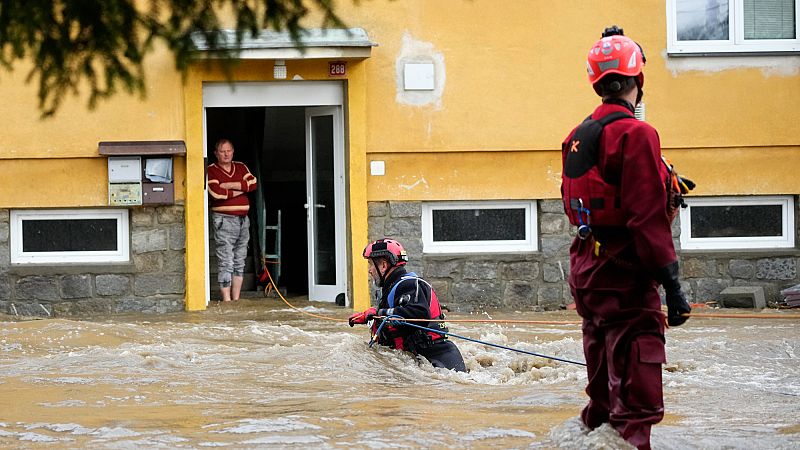
Deaths from flooding in Europe have dropped by 52 per cent since 1950, thanks to solutions like early warning systems and emergency preparedness, a new study from the Potsdam Institute for Climate Impact Research (PIK) has found.
These kinds of non-structural adaptation measures have also cut economic losses from flooding by 63 per cent. This is despite the number of people affected by flooding in Europe increasing by 8 per cent due to climate change over the same period.
“Flood protection and other adaptation measures have largely offset the increasing flood risk from expansion into flood plains and climate change across the continent since 1950,” Dominik Paprotny, PIK researcher and lead author of the study, said in a press release.
“Vulnerability has been significantly reduced, but progress in adaptation has been slower in the past 20 years, indicating the need for additional efforts to prevent an increase in flood losses from climate change in the future.”
Scientists analysed decades of flooding data
Researchers looked at 1,729 floods that occurred across the continent between 1950 and 2020. They compared them in scenarios with and without climate and socioeconomic changes over the seven decades.
Using historical data about damage from these events, they were able to work out the level of protection offered by adaptations such as dikes, dams, early warning systems and changes to building regulations.
Total economic losses almost doubled from €37 billion between 1950 and 1960 to €71 billion in the past decade. The growth of gross domestic product means that the actual economic impact has decreased significantly in percentage terms, amounting to one-third of what it was in the 1950s.
In short, Europe’s GDP grew at a much faster pace than the economic damage from floods.
What is driving flood damage in Europe and what has helped reduce impacts?
Increased exposure to flooding - more people or buildings in flood-prone areas - was the biggest driver of rising flood damages.
Climate change has increased economic losses and affected populations by 8 per cent and fatalities by 1 per cent. Its impact is particularly prominent in northwestern and parts of southern and eastern Europe.
Other factors like urbanisation, population growth, GDP growth and changes in land use also had an impact.
A reduction in vulnerability was found to be the strongest overall mitigating factor. Measures like improved building standards, early warning systems and emergency preparedness cut impacts by between 39 and 63 per cent since 1950 and up to 75 per cent in the 2010s.
Flood protection infrastructure, including dams, dikes and levees, has also played a critical role. The study estimates that these structural defences have reduced the effect of flooding by between 14 and 21 per cent. In the most recent decade (2011–2020), this protective effect increased, reducing impacts by up to 38 per cent.
The study’s authors note that these figures are likely to be an underestimate too, and the analysis only included floods that had actually occurred, so those where flood defences were overwhelmed. They don’t account for events where floodwaters were entirely held back by these defences.
Adaptation has its limits
Though the research shows that adaptation methods have been effective, researchers warn that there are limits to the damage they can prevent.
“As warming increases, we are getting closer to those limits,” co-author of the study, Katja Frieler, said in a press release.
Europe is warming twice as fast as the global average, according to EU climate monitor Copernicus.
In the last four years, the continent has seen multiple particularly severe floods, including the Arh Valley floods in Germany in 2021. When the river burst its banks, almost 190 people died and whole villages were swept away, causing an estimated €33 billion in economic damage.
In 2024, Europe experienced its most extensive flooding in over a decade, Copernicus said in April. Almost one-third of its rivers swelled to bursting point during one of the wettest years since 1950.
Flooding in Valencia, Spain, in late October resulted in 232 deaths and total economic damage estimated to be around €10.7 billion.
Together, storms and floods killed more than 300 people last year and affected 413,000 more across the continent. They inflicted at least €18 billion in economic damage.
The study’s authors say it makes it important to keep track of the impacts of climate change and cut greenhouse gas emissions to keep them within manageable limits, alongside monitoring progress on adaptation measures.







